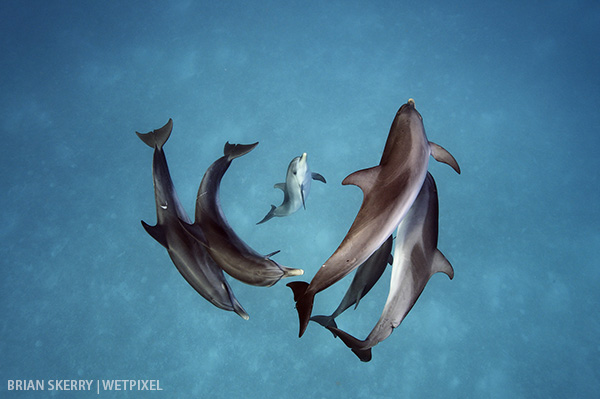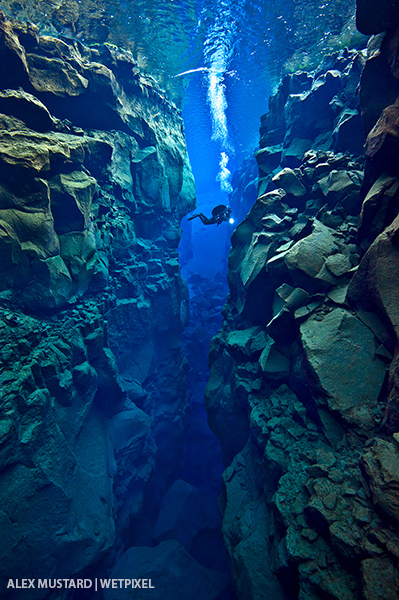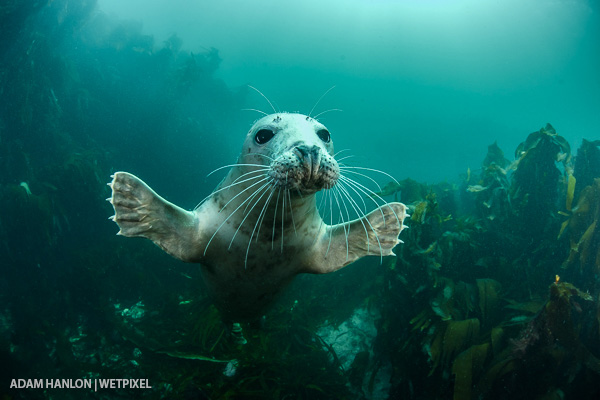Opinion: How to achieve great imagery

As underwater photographers and filmmakers, we all attempt to create stunning, memorable imagery. Often we seek to emulate well known image makers and the results that they achieve. For example, Wetpixel’s Facebook Group has an incredible array of amazing imagery. This profusion of imagery available to viewers means that if our’s is to be considered exceptional, it needs to be unique and technically perfect.
What follows are some ideas that may help aspiring image makers to achieve this:
If you need to explain it…
Amazing images need no explanation. You may think that the audience may be impressed that you took the image whilst free diving in Arctic water while being chased by a large school of titan triggerfish (!), but most are actually simply there to look at your imagery. Of course, having the necessary ability, technique and fortitude to operate in challenging environments or a skill base that enables the use of specialized techniques and equipment may well allow the capturing of unique imagery, but what counts is the imagery that you produce, not how you took it.
It is important to distinguish between explaining an image and describing it. There are many amazing images that depict behaviors or scenes that benefit from a description of what is going on. This enhances the image’s significance. In general, explaining how challenging the image was to capture does not.
Post capture editing is a part of the process
There seems to be a feeling that post processing is in some way cheating and the creative process should end at the moment the shutter is pressed. Whilst we should always strive to achieve as perfect an image as possible in the camera, the fact is that post processing that enhances an image should be embraced as a part of the creative process. In many ways labelling an image as not having been “photoshopped” means that it has probably not yet reached its true potential.
There is a romanticized view that film (and the process of capturing images with it) is somehow “purer” than digital as it is easier to significantly alter an image in post with the latter. This loses sight of the fact that what matters above all is the image, not the process.
The minutiae of capturing or indeed editing it is only of interest to those that are interested in photography. The majority of people that view our work are not.
To claim that an image is somehow “benefits” or “more realistic” as it has not been post capture edited is to ignore that imagery is a creative process that starts with a vision and ends when that vision has been realized. In the vast majority of cases, post processing is a part of this.
Before I get lynched, I should point out that my comments are directed at post processing that enhances the imagery. Bad editing is worse than no editing!
Great subjects are less important than great images
We are very fortunate to be sometimes photograph or film rare elusive subjects and scenery that very few human beings have seen. Sometimes this in itself becomes a goal for image makers. Beyond their scientific importance and the need for species identification however, the “collecting” of species is often a hinderance. As photographers and videographers, our “job” is to use our artistic vision and technical skills to interpret and create a representation of what we see, not to catalog it. Returning to the article’s starting point, images should stand on their own merits rather than rely on the scarcity or difficulty of their subjects.

It should be pointed out that some subjects or types of shot are more charismatic and popular than others and will tend to be “crowd pleasers.” The combination of technically perfect creative process combined with these types of subject will create images that are enjoyed by those viewing them.
Focus on the subject
In order for imagery to cause an emotional response by the viewer it must deliver some kind of a message. The best way to ensure that any message gets through is to remove distractions. We don’t want the audience to be led off on a “wild goose chase” by elements within the imagery distracting him or her from the subject. Simple, uncluttered imagery is more effective.
There are a myriad of ways that we go about achieving this during both capture and post capture and to detail them is beyond the scope of this article. However, one principle is to always be aware of the background. Mediocre subjects against great backgrounds can look amazing whereas the most interesting and charismatic of subjects will look poor if it is placed against a poor or distracting one.
Technical mastery
The moments that we experience with an amazing subject are fleeting and often unrepeatable. This means that need to be in a position to capture them when they occur. This involves technical imaging skills, diving comfort and ability, fieldcraft and a knowledge of the subject. All of these are things that can be developed prior to pressing the shutter. For example, poor buoyancy control and diving skills will not only potentially damage the fragile marine environment but will also limit an individual’s ability to position themselves effectively in the water column. Being unfamiliar with camera controls and their effects will mean that even if buoyancy control is perfect, the imagery will be compromised. In the light of the need for post processing, learning how to use editing tools are a part of the necessary skills that need to be developed.

Iconic imagery is created when everything combines in a single image or sequence. To increase the chances of this occurring, the image maker should invest time and effort to constantly develop and improve in all areas of their skills and ability. If you do so, it will pay huge dividends in the quality of imagery that you produce.
Do your homework
It is no surprise that many well known underwater image makers have backgrounds in marine biology related science. The more we know about our subjects, the more likely we are to be able to find them and capture imagery of unique and interesting behaviors.
Knowing where a species lives, what it feeds on, how it responds to people, how the light will fall and what tools to chose to capture it are all things best done prior to your trip. The imagery you see on this page did not happen by chance or happy circumstance. The creators invested time and effort to research and investigate how best to capture them and this was likely done long before the image makers entered the water.

Experience counts too: The more time you spend with a subject or scene, the better you will enable to predict the resulting imagery. Bear in mind that we can benefit from other’s experiences too, it is a good idea to look at other’s imagery of subjects or places. The Wetpixel forums have a huge amount of information too.
Beware social media
It is a fact that social media is where the bulk of people will interact with underwater imagery. This represents both an opportunity and a concern. Judging your work’s worth based on people’s responses to it on social media is a mistake. Whilst it can reach a wide audience, the ease with which people can “like” images and the way that social media algorithms work the results are skewed depending on how you interact on the medium.
What it is useful for is to do some “market research” about how people respond to an image or type of image. If the people that interact with you on social media respond favorably to an image, this is a good indicator that the image and idea is a good one and should be developed further.
Some older image makers feel that digital imagery has simplified image making and made it “easier” to create imagery. Whilst it is true that the amount of imagery available has hugely increased (and continuous to do so) this has changed the “goal posts.” In order for imagery to be exceptional, it needs to be not only unique but also technically perfect.
It should be stressed that the above is a collection of my opinions and as such is very much open for debate. I have started a thread on the Wetpixel forum to facilitate this…